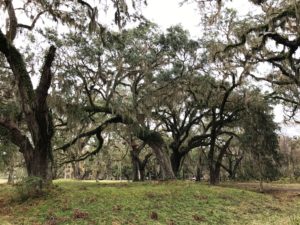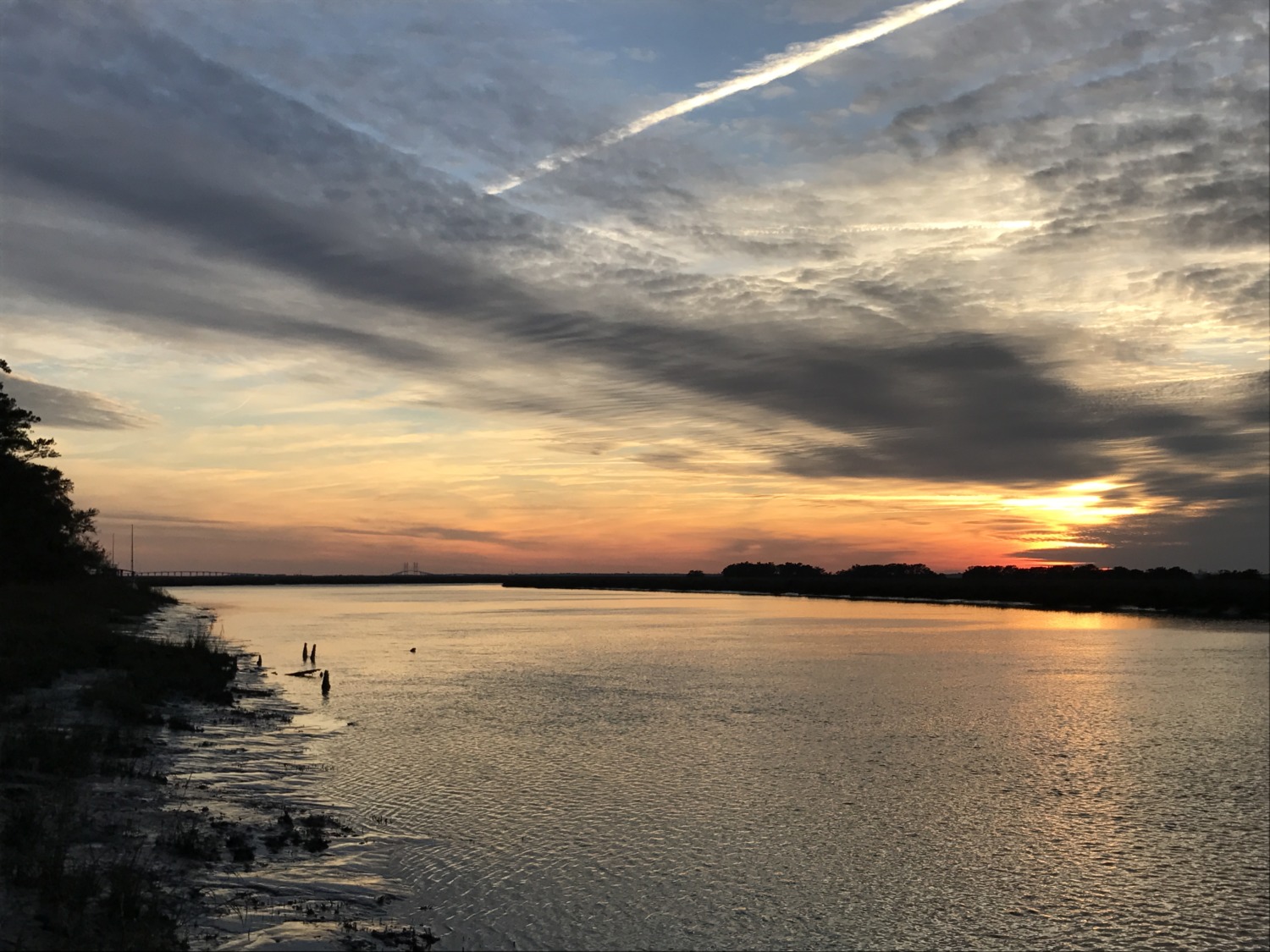Tom and I arrived at St. Simons Island to begin our winter job at Fort Frederica National Monument. We got here on Tuesday and started work on Wednesday. Before we started work, however, we had a little time to explore the island and orient ourselves.

St. Simons Island is an island off the coast of Georgia, just west of Brunswick. The island is 10 miles long and four miles wide. The Spanish arrived in the 1500’s and set up a mission to convert the Native Americans. Converting them worked so well that the natives didn’t resist when they were captured as slaves and the mission disbanded. St. Simons was first colonized by Oglethorpe and the British (more on that later) in 1736. A fort was built on this southern frontier of the British colonies. After the war with Spain, the town of Frederica died out and plantations took over the island. When the Civil War was over, the island contained a lively Gullah Geechee culture. In 1924 a causeway made the island more accessible and it evolved into the current resort community.

St. Simons Island has about 13,000 residents. Most of them live in small homes on the south end of the island in the town of St. Simons. As is common on islands and by beaches, the houses are built close together with very small lots. Because the climate is so mild in the winter, people are very active in the winter and stay inside in the air-conditioning much of the summer. Spring breaks and summers are busy with tourists. Snowbirds are common, but the ones who stay on St. Simons tend to be wealthy people who can afford more than one large and beautiful home. The homes on the northern end of the island start at $500,000 and go up from there.
Sandwiched between the coast of Georgia and Sea Island, St. Simons Island is surrounded by salt marshes on three sides. There are several beautiful beaches on the unprotected part of the shore but the St. Simons beaches are not as renowned as other beaches.
Hurricane Matthew, which struck in October, was the first hurricane to really affect St. Simons Island since 1898. The 105 mph winds of Hurricane Matthew knocked down thousands of trees on the island. People are still dealing with roof repairs and cleaning up the gigantic, uprooted live oak trees. The island was under a mandatory evacuation order so no one was killed.
Tom and I are enjoying being in the midst of civilization. There are two good grocery stores on the island – Harris Teeter and Winn-Dixie – and lots of other kinds of stores. There are so many restaurants that we could eat out three times a week and never hit them all. Because development on the island is strictly regulated there are very few chain restaurants or stores. We are looking forward to “discovering” these locally owned stores and restaurants. Cell phone service is good and we can walk to work and walk to church. Bike trails wind all over the island and we can bike most places we go. After the remoteness of other places we have worked, we are enjoying being in civilization!
This is just an overview of St. Simons Island. You will be hearing more about the island and the surrounding area as we get better acquainted. We are ready for some island living and doing it on “island time!”

